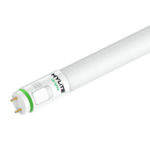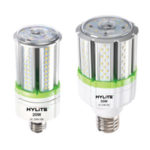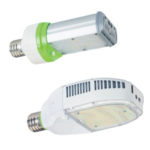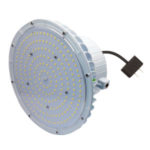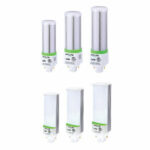Lumens, CRI & Color Temperature Guide
Better Color, Better Visibility, Better Results
Wattage used to be the go-to metric for judging a light bulb’s performance. But in the world of modern LED retrofits, watts only tell you how much power is being used, not how much useful, high-quality light you’re receiving.
For facility managers looking to improve visibility, energy efficiency, and occupant satisfaction, three technical specs are far more important than wattage alone. These determine not just how bright your spaces are, but how they look and feel to the people who use them every day.
We will explore each one in greater detail below, but here’s what really matters:
- Lumens – This measures total light output. The higher the lumens, the brighter the light, regardless of wattage.
- CRI (Color Rendering Index) – This indicates how accurately the light shows colors compared to natural daylight. A higher CRI means better visibility and color clarity.
- Color Temperature (CCT) – Measured in Kelvins, this determines the “tone” of the light, warm, neutral, or cool, and helps match lighting to the mood or task at hand.
Lumens: How Much Light You’re Actually Getting
Wattage once served as a stand-in for brightness because incandescent bulbs had fairly consistent efficiency. But LED technology changed that. One 10W LED may be brighter than another, depending on its design and efficacy.
Lumens measure light output directly. If a bulb produces 1,200 lumens, that’s how much visible light it emits. It doesn’t matter how many watts it draws; lumens are what your staff and tenants will experience.
To make smart comparisons, divide lumens by watts. This gives you efficacy, or lumens per watt. HyLite’s Omni-Bulb hits up to 120 lumens per watt, meaning it delivers more light for every unit of energy consumed. That’s the kind of performance that lowers your utility bill while maintaining safety and visibility.

CRI: How Colors Appear Under the Light
The Color Rendering Index, or CRI, is a scale ranging from 0 to 100 that measures how accurately a light source reproduces colors compared to natural daylight. A CRI of 100 means perfect color fidelity; the lower the number, the more distorted colors will appear.
In most commercial settings, a CRI of 80 or above is considered acceptable. The HyLite Omni-Bulb delivers >83 CRI, offering true-to-life color rendering for everything from signage and retail displays to inspection and task lighting.
A high CRI greatly improves visibility and safety. In stairwells, it helps warning signs and color-coded markings stand out and be easily read. In retail and hospitality venues, it makes products and decor look even more attractive. And in offices, it fosters a visually cozy atmosphere that eases eye strain and boosts productivity.
Color Temperature: Setting the Mood and Purpose
Color temperature is measured in Kelvins and describes the tone of white light a bulb emits, whether it leans warm (yellowish) or cool (bluish). This isn’t about brightness, but rather ambiance and suitability for the task.
A 2700K bulb emits a cozy, warm glow, often used in hospitality and residential spaces. A 4000K light offers a neutral white ideal for offices and classrooms. And a 5000K lamp delivers crisp, cool daylight often found in warehouses, inspection areas, or high-security environments.
HyLite’s Omni-Bulb provides selectable CCTs 2700K, 3500K, 4000K, and 5000K in a single lamp. This provides facility teams with the flexibility to fine-tune lighting by space or even adjust it on-site during installation. One corridor might benefit from a warmer tone to ease the visual environment, while another area might need brighter, cooler light for visibility and safety.
Why These Metrics Matter Together
Individually, lumens, CRI, and color temperature each tell us something unique. When combined, they create the overall lighting experience. Higher lumens mean your space is well-lit and inviting. A good CRI helps colors appear vibrant and true to life. The perfect color temperature sets the mood and changes the atmosphere, making the space feel just right.
When evaluating retrofit options, facility managers should consider all three. Lighting isn’t just about seeing; it’s about seeing accurately and comfortably.
And with modern solutions like the HyLite Omni-Bulb, you don’t have to choose between performance and flexibility. You get high lumens per watt, CRI >83, and selectable color temperatures, all in a form factor that installs easily into your existing infrastructure.
Better lighting starts with better specs and knowing how to read them. When you understand what lumens, CRI, and color temperature mean, you’re equipped to make choices that improve not just energy efficiency, but the overall quality of your facility’s lighting system.
Ready to start buying the right lighting for your needs? Reach out to us for professional help.



